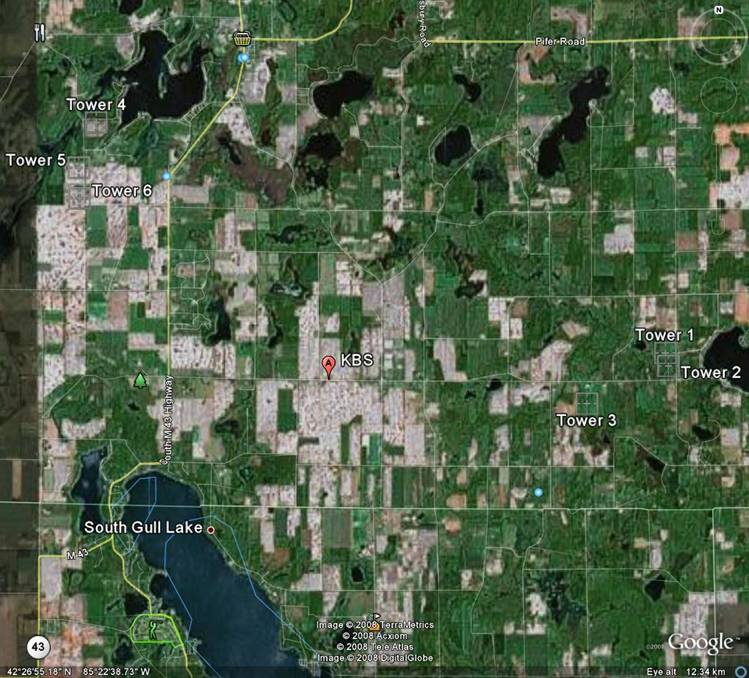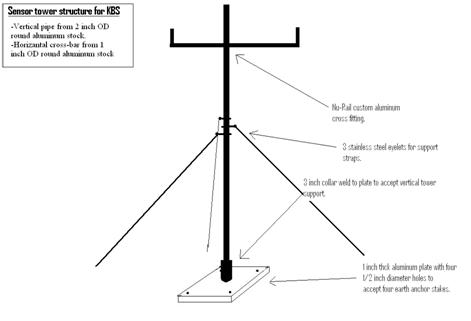Forest Carbon and Water Fluxes at the AmeriFlux Oak Opening
Project Overview
The oak openings region of northwest Ohio and southeast Michigan occupies a band of sandy soil that was deposited along an ancient lakeshore during glacial retreat about 11,000 years ago. The sand lies above a layer of clay that retards water penetration and the perched water table tends to be close to the surface. The result is a landscape that provides diverse habitats for plants: high exposed spots are xeric and provide conditions suitable for dry prairie communities, whereas low spots are moist and may even contain standing water for much of the late winter and spring.
Two ecosystem types, absent from the rest of Ohio, are found in the oak openings: (1) Black oak savannas are confined to a few sites in the Midwestern U.S., and have been designated by The Nature Conservancy as a globally endangered ecosystem, and (2) dry prairies are common in the western Great Plains but are very unusual in the Midwest.
The region has a remarkable number of rare and endangered species including 145 plants that are currently listed as potentially threatened, threatened or endangered in Ohio. Nearly 40 species of amphibians and reptiles and some 160 bird species are present in the region. A number of state-listed insect species and the federally endangered Karner blue butterfly also occur in the oak openings.
The region itself is threatened by pressures of urban and agricultural development leading to destruction and fragmentation of habitat, lowering of groundwater levels, invasion of non-native species, fire suppression, and water pollution due to runoff.
Acknowledgements
Funded by xxxx
Conceptual Framework and Hypothesis
We hypothesize that significant differences exist in ecosystem production, biophysical regulations and belowground carbon allocation among the three biofuel production systems. These differences are clearly reflected at multiple temporal scales.

Figure 1. (Above) Current locations of the seven eddy covariance (EC) towers at the Kellogg Biological Station in Hickory Corners, MI.

Figure 2. (Above) Layout and assembly of solar panels, which are located at each EC tower site.
Data
- Eddy Covariance Flux
- Respiration
- Photosynthesis
- Soybean Biome
- LIDAR SoybeanBiometrics(09) Lidar/DEM 2009 Harvesting OtherData LAI2010 Spectral Reflectance 170610 210710 250710 250710a 261710 All 2011
Additional information on the procedures that are used to collect this data can be found on our resources page
Team Members
Name |
Role |
Contact |
|---|---|---|
| Dr. Jiquan Chen | Professor, Principal Investigator | jqchen@msu.edu |
| Dr. Michael Abraha | Research Associate | abraha@msu.edu |
| Yahn-Jauh Su | PhD Student | suyahnja@msu.edu |
Contact
Center for Global Change and Earth Observations
202 Manly Miles Bldg. 1405 South Harrison Road Michigan State University, East Lansing, MI 48823


